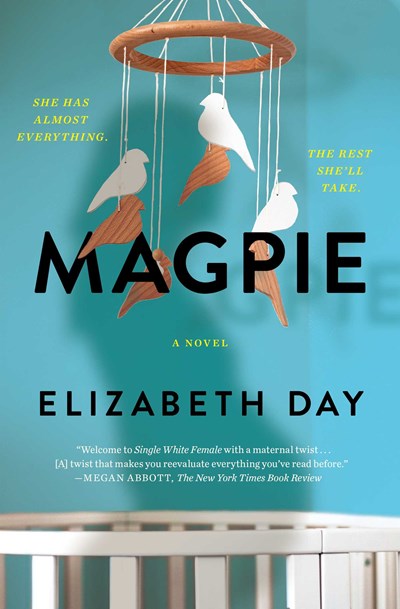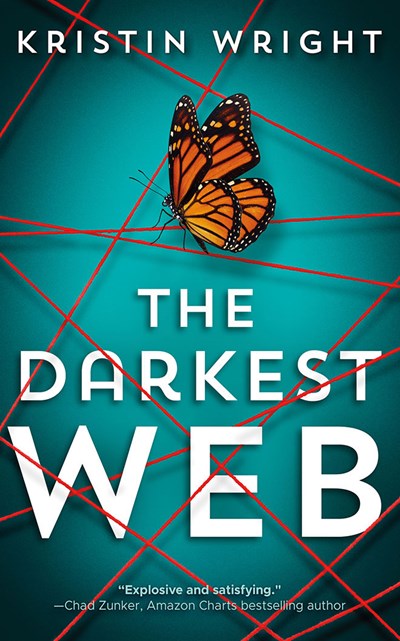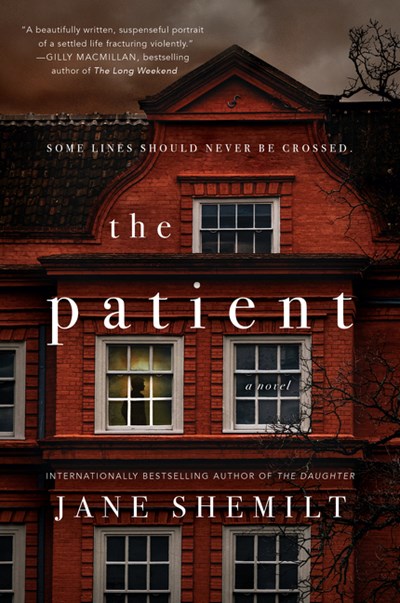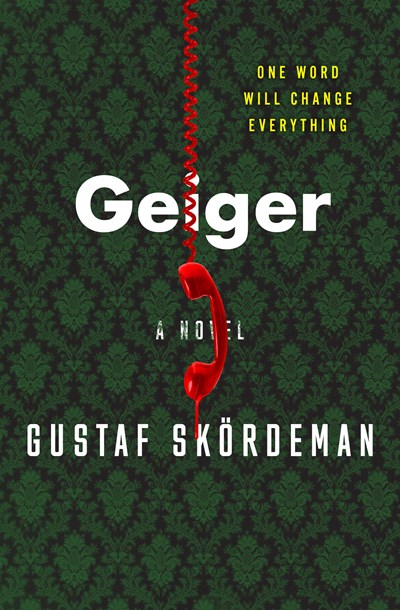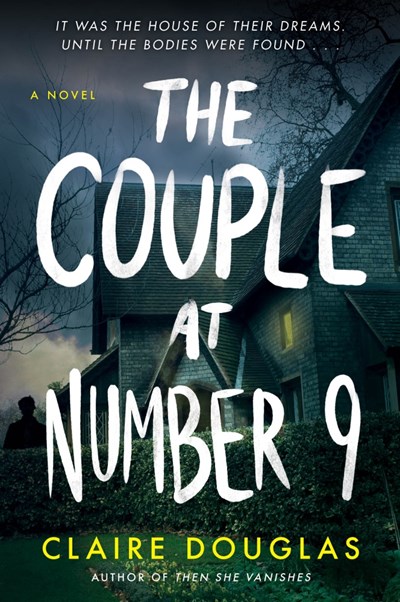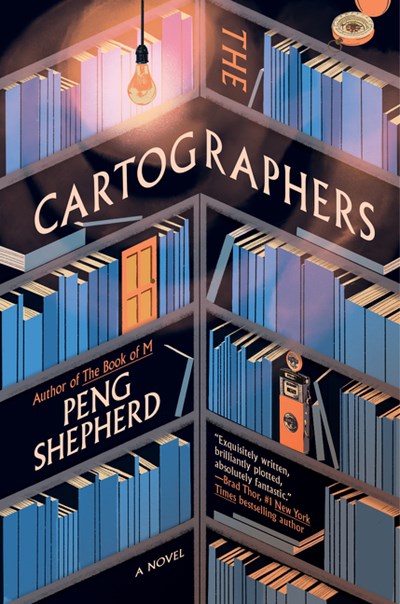Goldin’s (The Night Swim) startling work immerses readers in the disorientation and vulnerability that is amnesia. Every time Liv Reese wakes up, she has no memory of the previous two years. Notes that she writes on her hands and Post-its on her doors and walls guide her to contact friends who can help and to find the precious journal that details each vanished day. She repeatedly learns afresh that she was injured two years ago, leading to her memory problems, while other terrible events from that time are slowly revealed. In the present, the awakening that opens the book sees her running from an apartment with a bloody knife. Did she hurt someone? Whose apartment was that? Why does it seem like a different season? Then the point of view switches to a dead body being found, and a chase is on that sees us switching back and forth in time from before the injury, when Liv was a nightlife-loving young New Yorker who worked at a high-status magazine, to a few days before the bloody-knife incident, when the past catches up to her with a vengeance. The displacement caused to Liv by her condition is visited on readers to fast-paced and thought-provoking effect here; the story is gripping too, all adding up to a top-shelf psychological thriller for fans of Alice LaPlante.
Suspense
hen London couple Marisa and Jake rent their spare room to Kate, the three get along fine at first, even if things are a little awkward. The extra money is certainly helpful when Marisa becomes pregnant with a longed-for baby. But soon things turn weird and then sinister as unpregnant Kate shows up at Marisa’s prenatal yoga class and, in other ways, seems to be pushing her way into their lives far too much. Marisa fears that the interloper might even be having an affair with Jake. Then we switch to Kate’s point of view, to encounter the same events, even the same conversations, from a very different perspective. Day’s (The Party) story (while not recommended to those facing the pain of infertility, a major plot point) is fascinating because of the individual stories and the novel’s upside-down turn halfway through. The portrayal of Jake’s snooty mom, Annabelle, a wicked-witch-type mother-in-law, is the icing on the strange cake. Devotees of unreliable-narrator tales, snap this one up!
A fast-paced, perplexing mystery plus the main suspect’s heavy past combine to make Wright’s second in the series (after The Darkest Flower, 2021) one to remember. Throughout the book, there are two stories. In the public one, beautiful—so beautiful it’s problematic—workaholic lawyer Jane Knudsen is accused of murdering her tyrant boss and is defended by her former college roommate, lawyer Allison Barton. Then there’s the private tale, in which it’s slowly revealed why Jane never lets anyone get close and finds taking the fall for a murder preferable to telling the truth. Child sexual abuse is a prominent theme here, and Wright manages to keep those crimes off-screen while their emotional and practical repercussions are sensitively explored. In the process, readers are given two relationships to root for: Jane’s fledgling one with a coworker she dares to fall for, and Allison’s as a single mom who’s trying to balance romance with a promising man with raising a child who wants her mother all to herself. There’s a lot to ponder here, and before you know it, a twist shatters the story. Try this after Wanda M. Morris’ All Her Little Secrets, which also features a woman lawyer accused of murder.
A richly imagined novel in which the elements of suspense grow organically from the characters’ lives. Fifty-something Rachel, a doctor, has a tidy, if dull, life with her husband of many years, a medical practice she enjoys, and a beautiful home in the cathedral town of Salisbury. Her one regret is adult daughter Lizzie, who is totally over her mother (“Take a break Mum, stop texting me!”). When French painter Luc walks into Rachel’s office—he and his family are new to town and he’s experiencing psychological issues—the attraction is immediate, although left unfulfilled. Meanwhile, Rachel suspects she is being followed, her husband is acting weirdly, and Lizzie is keeping something from her. Eventually she and Luc reunite and—professional ethics be damned!—initiate their affair while in the south of France. Affairs can peter out, some manage to live on in secrecy, while others are exposed, creating scandal. But Rachel and Luc’s relationship razes their world—leading to murder, incarceration, and abandonment. Way to throw away those middle-class inhibitions! Readers will be seduced by Shemilt’s ability to gradually build a story, leading us from the mundane to the miraculous.
An homage to Agatha Christie’s And Then There Were None that is both wryly humorous and deadly serious. The setting: a Victorian gothic house, named Seaglass, located on a tiny island off the Cornwall coast, accessible only during low tide. The cast: matriarch Nana, her son and ex-daughter-in-law, three adult nieces, a grandniece, and a family friend. The occasion: Nana’s 80th birthday, predicated to be her last. As the sun goes down, the tide rushes in, dinner is served, and then it’s time for Nana to read her will. Our narrator, and very much the center of the book, is Daisy, Nana’s youngest and favorite niece, who was born, in Daisy’s word, “broken,” with a heart condition she could die from at any moment. Nana—a wonder of a character—is a famous children’s book author, and Seaglass overflows with her designs and eerie, Edward Gorey-esque poems. The novel shifts between the family’s painful past and the nerve-wracking present, and as the night grows longer, and the revelations unfold, the carnage increases. The ending manages to shock, and while some readers may feel cheated by the turn of events, others will enjoy having to rethink the whole book. This book isn’t twisty, it’s demonic.
Readers will wish that this standalone were the first in a series (though Toyne has written series that readers can fall back on, such as the Sanctus Trilogy). The book starts with a single killing, a seeming locked-room affair, as a woman is discovered murdered in her fortress-like London home that requires fingerprint and facial-recognition access. Her husband is nowhere to be found and is the obvious suspect, but adding perhaps a red herring, perhaps a path to follow, several objects are placed around the body. One of them is a forensic-science manual, How to Process a Murder, which is by the police chief’s estranged daughter, Laughton Rees. Following the grisly opening, the tale continues with chapters presenting perspectives from Laughton, who as a child survived an attack by a serial killer and has never been the same; nervous, kind-hearted Pakistani-Irish cop Tannehill Khan, who soon finds that the crime stats he dreaded presenting to the press are the least of his problems; and a sleazy tabloid journalist who revels in the three Ms: murder, mystery, and money. The wish for a series mainly comes from observing the Tannehill and Laughton characters, who are both burdened with far too much and believe in themselves far too little. The taut and terrifying ending doesn’t hurt either.
Talk about jumping right into the thick of the story. As Skördeman’s debut opens, a wife says goodbye to her visiting daughters and grandchildren, picks up the phone, and, hearing just the word Geiger, shoots her husband in the head. We have no idea why she would do this nor where she’s headed after immediately going on the run, and what unfolds is more bizarre than we could have imagined. It’s also much weirder than the Swedish public ever thought could happen to the victim, a beloved TV presenter and jolly father figure known as Uncle Stellan. Espionage involving Sweden’s relationship with East Germany during the Cold War and after, and the relationship between Uncle Stellan’s spoiled, mean daughters and their childhood friend and bullying target Sara—now a police officer who elbows her way into the investigation—are highlights of this tale, as are the frequent head-spinning twists. Potential readers should note that child sexual abuse is a major plotline here. For fans of Elizabeth Elo’s Finding Katarina M., which also has echoes of a communist regime.
A richly layered novel—part mystery, part suspense—but completely satisfying. Saffron and her boyfriend are renovating their dreamy Cotswold cottage to make room for a baby, as Saffy is pregnant. Her grandmother, Rose, once lived here, although no one in the family even knew of the cottage’s existence until a few years back. But when the contractors tear up the back garden to expand the kitchen, they discover not one but two corpses. Questions lead back to Rose, now in a nursing home with dementia, and soon enough Lorna, Saffy’s delightful mom, flies in from the south of Spain—tan, oversized earrings, skinny jeans, Spanish boy-toy—to help sort out what has blown up into a murder inquiry. This novel is overflowing with narrators and stories—we have documents from the past, Lorna’s memories, Rose’s memories, another storyline from a different family—and that’s just the start. But Douglas manages to keep all the balls in the air, the pace brisk, and the ending a total head-spinner. A classic slow burn, this novel will appeal to fans of Catherine Steadman and Lucy Foley.
A quirky, droll, and completely captivating novel about Linda, whose sad-sack suburban life slowly falls apart, only to reveal something far better. Linda’s passions are few, namely housecleaning—she’s a bit obsessive compulsive—and her part-time job in a thrift shop. Her contacts are equally meager, mainly her mother, who’s skilled in finding new and creative ways to put down her daughter, and husband Terry, best ignored, which Linda does. When she and Terry move into a new home in their housing estate, Linda becomes fascinated with the advertising catalogs—think West Elm—that are still being delivered to the previous occupant, Rebecca. Linda decides the best way to achieve this lifestyle is by tracking down Rebecca and ingratiating herself, and in some of the funniest yet most cringe-worthy scenes in the book, she succeeds in doing just that. Meanwhile, a serial killer is loose in the estate while Terry’s work hours suddenly become extremely erratic. Cause for concern? Not for Linda, who’s more taken in by BFF Rebecca than anything nefarious that Terry might be up to. A wonderful novel that reminds us that life is rarely what it seems, and outcomes can seldom be predicted.
One of the most original books I’ve read in a long while, and one that brings up fascinating questions about the relationship between maps and the places they depict. From the beginning of their studies at the University of Wisconsin, the friends who call themselves the Cartographers live to make maps come alive. After grad school, they begin work on The Dreamer’s Atlas, which will feature “fantastical recreations of real places, and…realistic ones of imaginary places”—for example, the magic-tinged maps from Lord of the Rings will be made to look real and actual places will be given the fantasy treatment. The work is soon abandoned and the friends’ lives take a very wrong turn when they become obsessed with something outside the atlas. Move forward twenty-something years and Nell, daughter of two of the Cartographers, is struggling in a job she hates after being fired years before from the map division at New York Public Library by her father, a legendary archivist there. She and her father haven’t been in touch in all those years, but she’s forced back to the library when he’s found dead at his desk, starting a series of very odd happenings that Nell must get to the bottom of if she doesn’t want to be murdered next. The library crimes here, while shocking, take a welcome back seat to the Cartographers gripping adventure, as Shepherd (The Book of M) lays bare how reality and wishes, passion and pain can coexist and become explosive. For fans of Zakiya Dalila Harris’ The Other Black Girl, which also swerves into unexpected waters.


